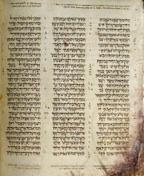Ancient Hebrew and Semitic Linguistics
at
The University of Toronto
The Semitic Language Family Tree
(from the American Heritage Dictionary, 4th edition)
A Brief History of Hebrew and Northwest Semitic Language Study at U of T
The study of ancient (primarily biblical) Hebrew at the U of T has a long history, going back to the origins of the institution. Among the first cadre of teachers at King’s College when it first offered courses in 1843 was Jacob Maier Hirschfelder (also spelled ‘Hirshfelder’). Hirschfelder, who had arrived in Toronto c. 1840 and who was a Jew who had converted to Christianity, was hired as a Hebrew tutor (the only teaching staff at that rank). Hirschfelder was a polymath whose language abilities were impressively broad. In addition to biblical Hebrew he taught Samaritan Hebrew, Syriac, Arabic, and German, and had facility in Greek and Latin. When King’s College officially became the University of Toronto in 1850, he had hoped to become the first professor of Oriental languages (he was instead appointed as a lecturer, the status he maintained until his retirement in 1888). Certainly, the prominence of intense grammatical study of Near Eastern languages at U of T owes much to Jacob Hirschfelder:
Hirschfelder trained his students to be highly adept in the linguistic aspect of their studies and, as a matter of fact, began the tradition which is still characteristic at the University of Toronto programme that linguistic excellence is the foundation of further studies. (Starkman, p. 87)
When U of T introduced the doctorate of philosophy in 1897, the department of Oriental Languages and Literature was one of only seven prepared to offer the necessary coursework and guidance to achieve the advanced degree. Over the course of the twentieth century, this department, renamed to Near Eastern Studies (NES), established itself as a premier institution of Egyptology, Assyriology, and Semitic Language study in North America.
The Department of Near and Middle Eastern Civilizations came into existence on July 1, 1996 as a result of the merger of the formerly separate departments of NES and Middle East and Islamic Studies (MEI). Hebrew studies within the newly formed NMC experienced a slow transition over the following decade; only rabbinic studies remained a constant in terms of course offerings and teaching staff. In July 2005 two new faculty appointments in the areas of ancient Hebrew and Early Judaism/Dead Sea Scrolls allowed the department to offer courses and accept applications for graduate research.
Sources:
Starkman, Mel. 1981. “A Meshamud at the University of Toronto.” Journal of the Canadian Jewish Historical Society 5/2:70-90.
Friedland, Martin L. 2002. The University of Toronto: A History. Toronto: University of Toronto Press.
Current Ancient Hebrew Language Study at U of T
In the recent redesign of the Hebrew curriculum within NMC, we now boast four full years of undergraduate study and a full selection of graduate language and linguistics seminars.
For undergraduate students, the sequence starts with a full-year course that works students towards a comprehension, whether in reading, writing, hearing, and even speaking biblical Hebrew. The second level consists of intensive reading courses intended to improve grammar and ‘immerse’ the students in Hebrew as much as possible for an ancient language; they are offered as the following topically-arranged courses: Myth & Story, Law & Ritual, History Writings, Prophecy, Prayer & Lament, and Jewish Apocalyptic Literature. (Beyond ‘ancient’ Hebrew, we also offer courses in Midrash, Mishnah & Tosefta, and Babylonian Talmud.)
At the third level of study, student are introduced to advanced study in Ancient Hebrew Grammar, Comparative Semitics, Development of Traditions in Early Judaism and Christianity (and in rabbinics: Halakhic Midrashim, and the Jerusalem and Babylonian Talmuds). See the course descriptions at the NMC department site.
Graduate study in ancient Hebrew (within the Hebrew and Judaic studies program) presumes a thorough background in biblical Hebrew as well as competence in the appropriate texts (Hebrew Bible, Hebrew epigraphy, relevant ANE texts). The topics for graduate seminars include, among others, advanced Hebrew grammar (including composition and historical reconstruction), current issues in Hebrew philology and linguistics, early Hebrew epigraphy, Comparative Semitics, Textual Criticism, Wisdom, Legal Traditions (and in rabbinics: Midrash, Mishna, and Talmud). See description of graduate studies and requirements at the NMC department site.
Current Semitic Language Study at U of T
At the Graduate level NMC offers two other courses in Northwest Semitic languages (within the Hebrew and Judaic studies program): Phoenician & Punic Epigraphy and Ugaritic. Additionally, students interested in NWS languages typically take the comparative Semitics, advanced Hebrew grammar, and Hebrew philology seminars as well as the early Hebrew epigraphy course. Also available are courses in Aramaic, Akkadian, Arabic, Ge‘ez (upon request), and Egyptian.
Current Modern Hebrew Study at U of T
Until 2010 modern (or Israeli) Hebrew had been taught within NMC on a sessional basis. As of September 2010, this language sequence is housed in the Department of Religious Studies. Lecturers offer courses in first and second level spoken Israeli Hebrew, Israeli literature in translation, and an occasional course in Israeli literature in Hebrew. There has been an ongoing effort to fund a professorship in modern Hebrew language and literature and it remains a present curricular and research need.
Relevant Links for the Study of Ancient Hebrew at U of T


Ruth 1:1-2:3a, from the Aleppo Codex (ca. 925 CE). Image from www.aleppocodex.org.